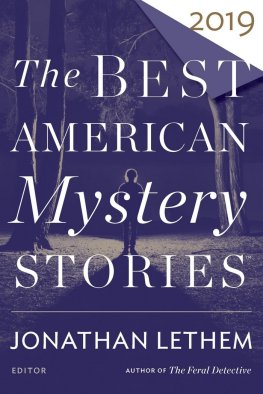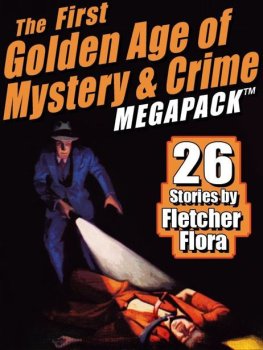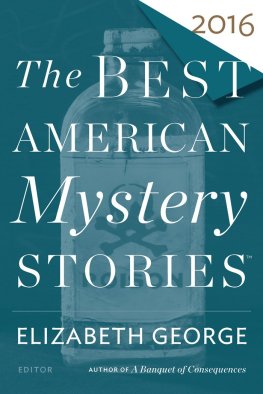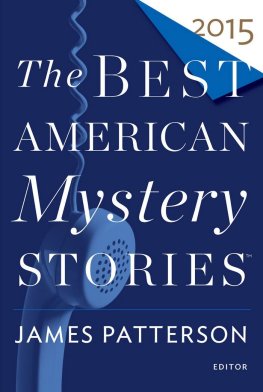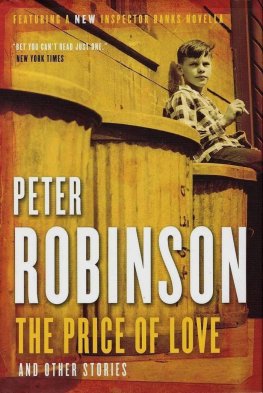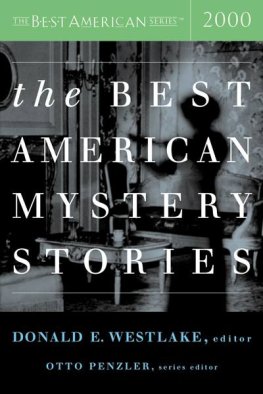The Best American Mystery Stories 2017
(Edited and with an Introduction by John Sandford
Otto Penzler, Series Editor)
Punchers Chance by Doug Allyn. First published in Ellery Queen Mystery Magazine. Copyright 2016 by Doug Allyn. Reprinted by permission of Doug Allyn.
The Master of Negwegon by Jim Allyn. First published in Ellery Queen Mystery Magazine. Copyright 2016 by Jim Allyn. Reprinted by permission of Jim Allyn.
The Human Variable by Dan Bevacqua. First published in The Literary Review. Copyright 2016 by Dan Bevacqua. Reprinted by permission of Dan Bevacqua.
Power Wagon by C. J. Box. First published in The Highway Kind. Copyright 2016 by C. J. Box. Reprinted by permission of C. J. Box.
Williamsville by Gerri Brightwell. First published in Alaska Quarterly Review. Copyright 2016 by Gerri Brightwell. Reprinted by permission of Gerri Brightwell.
Abandoned Places by S. L. Coney. First published in St. Louis Noir. Copyright 2016 by S. L. Coney. Reprinted by permission of S. L. Coney.
Flight by Trina Corey. First published in Ellery Queen Mystery Magazine. Copyright 2016 by Trina Warren. Reprinted by permission of Trina Warren.
The Incident of 10 November by Jeffery Deaver. First published in In Sunlight or in Shadow. Copyright 2016 by Gunner Publications, LLC. Reprinted by permission of Gunner Publications, LLC.
The Man from Away by Brendan DuBois. First published in Ellery Queen Mystery Magazine. Copyright 2016 by Brendan DuBois. Reprinted by permission of Brendan DuBois.
GI Jack by Loren D. Estleman. First published in The Big Book of Jack the Ripper. Copyright 2016 by Loren D. Estleman. Reprinted by permission of the author.
Ike, Sharon, and Me by Peter Ferry. First published in Fifth Wednesday Journal. Copyright 2016 by Fifth Wednesday Books, Inc. Reprinted by permission of Fifth Wednesday Books, Inc. and the author.
Lovers and Thieves by Charles John Harper. First published in Alfred Hitchcock Mystery Magazine. Copyright 2016 by Charles J. Rethwisch. Reprinted by permission of Charles J. Rethwisch.
Land of the Blind by Craig Johnson. First published in The Strand Magazine. Copyright 2016 by Craig Johnson. Reprinted by permission of Craig Johnson.
The Painted Smile by William Kent Krueger. First published in Echoes of Sherlock Holmes. Copyright 2016 by William Kent Krueger. Reprinted by permission of William Kent Krueger.
Dot Rat by K. McGee. First published in Mystery Weekly Magazine. Copyright 2016 by Karen McGee. Reprinted by permission of Karen McGee.
The Woman in the Window by Joyce Carol Oates. First published in One Story. Copyright 2016 by The Ontario Review Inc. Reprinted by permission of the author.
The Sweet Warm Earth by Steven Popkes. First published in Fantasy and Science Fiction. Copyright 2016 by Steven Popkes. Reprinted by permission of Steven Popkes.
All Things Come Around by William Soldan. First published in Thuglit. Copyright 2016 by William R. Soldan. Reprinted by permission of William R. Soldan.
The Process Is a Process All Its Own by Peter Straub. First published in Conjunctions. Copyright 2016 by Seafront Corporation, Inc. Reprinted by permission of Peter Straub.
Night Run by Wallace Stroby. First published in The Highway Kind. Copyright 2016 by Wallace Stroby. Reprinted by permission of the author.
The Best American Mystery Stories can now drink legally, turning twenty-one with this edition, and has been fortunate to have led a happy life through its early years. It was conceived at a lunch with my agent, Nat Sobel, a festive dining experience that we have shared every month for more than three decades. The series was fed by hundreds of the best writers in North America, and given a wonderful, caring home by Houghton Mifflin (now Houghton Mifflin Harcourt).
BAMS has had a blessed life from birth, eschewing the expectable growing pains of a newborn into a mature adult. The guest editor of the 1997 edition was the distinguished Robert B. Parker, and it made several bestseller lists. The next guest editor was Americas sweetheart, Sue Grafton, and that volume outsold the first. Sales, reviews, and, most important, the stories in each edition continued the excellence and success of the first books. Perhaps not surprisingly, the series hit a bump in the road when it hit its teenage years, the hardcover edition being dropped after 2008 because of reduced sales, leaving it exclusively a paperback. It quickly rebounded as it grew a little older, however, filling out and coming closer to realizing its potential by adding e-book editions.
It would be reasonable to expect a lot of changes over the years, and there have been some, but mostly behind the scenes so that readers would be unlikely to sense them. When stories were being read for the first book, my invaluable colleague, Michele Slung, without whom it would take me three years to produce this annual volume, examined about five hundred stories to determine whether they were mysteries and whether they were worth consideration. When the Internet became a greater part of our lives, we learned of more literary magazines, more little regional publishers, and electronic magazines (e-zines) that published mystery fiction. She now reads all or parts of three to four thousand stories every year. She then sends me those she thinks I should read, a stack that I whittle down to the fifty best, which are sent to the guest editor, who selects the twenty that go into the book; the other thirty make the honor roll. I can think of no other substantive changes, which I regard as a good thing. As Tony Hillerman said to me about thirty years ago (yes, yes, I know its a clich, but that was the first time I heard it, and I can still hear it with his little bit of a twang), If it aint broke, dont fix it.
One thing that changes every year is the guest editor, and everyone who has agreed to perform this task has done it as an act of generosity and self-sacrifice. Once an author has achieved the fame and success that comes with being a national bestseller (as all the guest editors have been), the drain on his or her time and energy is almost unfathomable. To put aside their books, to risk losing the battle with their own deadlines, should earn them immeasurable thanks (which I am happy to send).
John Sandford (the pseudonym of John Camp) had a long career as a journalist, resulting in a Pulitzer Prize in 1986. He decided to write fiction full-time three years later, when his first novel, Rules of Prey, became a huge success. He has produced approximately forty novels, every one of which has been on a national bestseller list in one format or another, but he is best known for the Prey series, starring Lucas Davenport, the handsome, well-tailored cop who drives a Porsche.
It would be inappropriate not to thank the previous guest editors, who, like Mr. Camp, gave so much time and effort to make the books in this series as good as they could be. Ive offered kudos to Robert B. Parker and Sue Grafton, who were followed by Ed McBain, Donald E. Westlake, Lawrence Block, James Ellroy, Michael Connelly, Nelson DeMille, Joyce Carol Oates, Scott Turow, Carl Hiaasen, George Pelecanos, Jeffery Deaver, Lee Child, Harlan Coben, Robert Crais, Lisa Scottoline, Laura Lippman, James Patterson, and Elizabeth George, and I am in debt to them all.
Presuming that you are familiar with these giants of the mystery world, you will quickly perceive that despite their literary excellence, they produce very different kinds of fiction, ranging from hard-boiled to traditional detective stories to international thrillers to crime stories and more. The literary genre described as mystery is large and embraces multitudes. I define it liberally to mean any work of fiction in which a crime, or the threat of a crime, is integral to the theme or plot, and you will find a great range of styles and subgenres in the present volume. Please dont call or write to complain that many of these stories are crime or psychological suspense rather than detective fiction. I know. Tales of observation and deduction, the staple of the so-called Golden Age (between the two world wars), have become more difficult to write (Agatha Christie used up too many plot ideas!), and we have seen the whodunit and the howdunit pushed more to the side of the road that has become dominated by the whydunit. This change has often resulted in superior literature, with character development and exploration unheard of in the 1920s and 1930s.

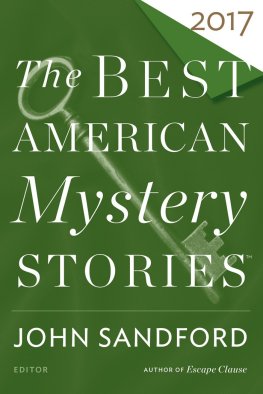

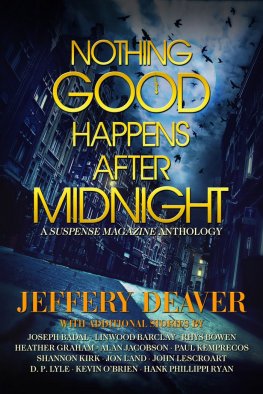

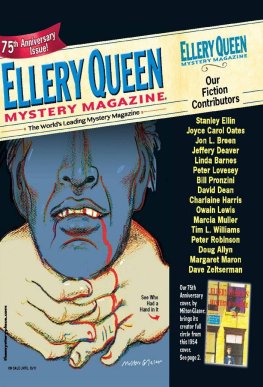
![Dzheffri Diver - Where the Evidence Lies [A Lincoln Rhyme Short Story]](/uploads/posts/book/875547/thumbs/dzheffri-diver-where-the-evidence-lies-a-lincoln.jpg)

